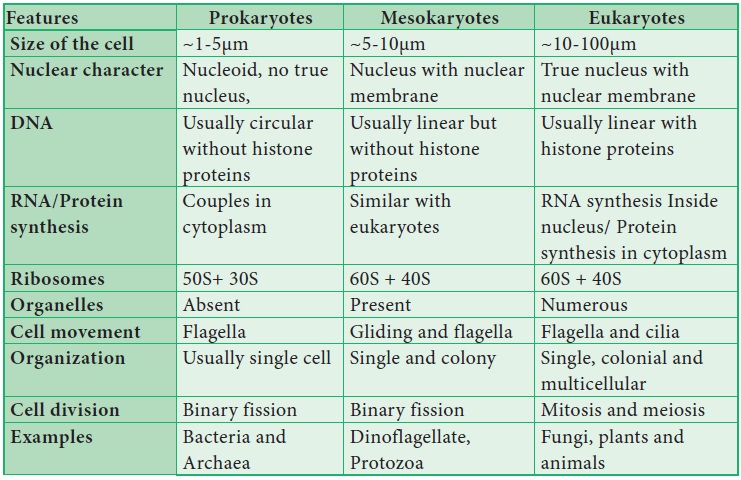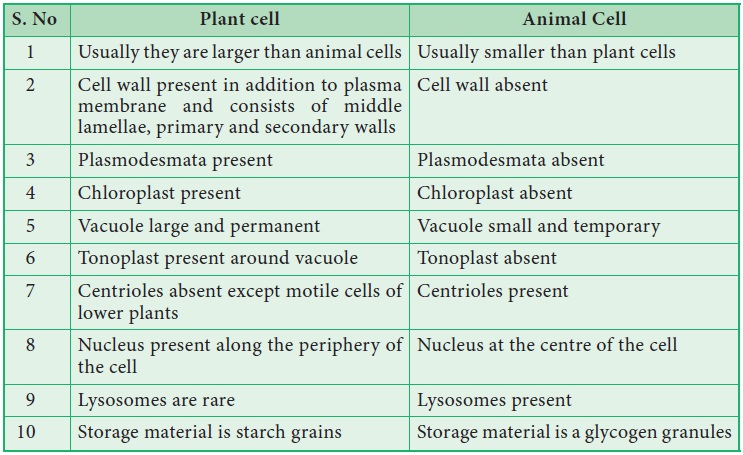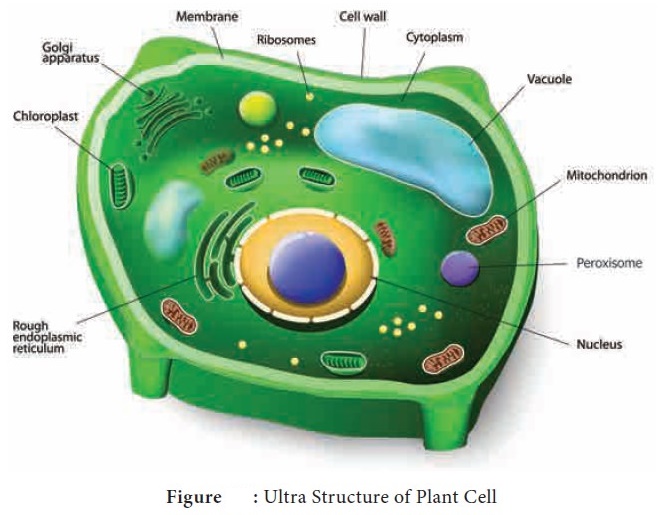Cell: The Unit of Life | Botany - Answer the following questions | 11th Botany : Chapter 6 : Cell: The Unit of Life
Chapter: 11th Botany : Chapter 6 : Cell: The Unit of Life
Answer the following questions
Cell biology and Biomolecules
Cell: The Unit of Life
6. Bring out the significance of phase contrast microscopy
•
Light passes with different velocity after coming out of the thinnest and
thickest areas of the phase plate thereby increases the contrast of the specimen.
•
Direct light passes through thin area of phase
plate, where light passing from the specimen reaches thick area of base plate
•
Thick area light speed low, thin area, light travel fast therefore contrast is
increased in the specimen
•
Living cells tissues & cells
cultured invitro during mitosis can be studied.
7. State the protoplasm theory
•
Fischer in 1894 & Hardy (1899) Proposed the Colloidal theory of Protoplasm
(the physical basis of life)
•
It is a colloidal system with water, many biological import things, glucose,
fatty acids, amino acids minerals, vitamins hormones & enzymes are seen.
•
Homogenous -These solutes are
soluble
•
Heterogenous - Solutes are not
soluble & This forms the basis for its colloidal nature.
Protoplasm occur in 2 states but
inter convertible
•
(i) Sol ---- gelation
→ gel
•
(ii) Gel ----solation→ Sol
•
Sol can become Gel
•
Gel can be converted into Sol
•
These are the primary basis for mechanical behaviour of cytoplasm.
8. Distinguish between prokaryotes and eukaryotes

9. Difference between plant and animal cell

Plant Cell
1.
Usually they are large than animal cell
2.
Cell wall present in addition to plasma membrane and consists of middle
lamellae. Primary and secondary walls
3.
Plasmaodesmata present
4.
Chloroplast present
5.
Centrioles absent except motile cells of lower plants
6.
Vacuole larger and permanent
7.
Tonoplast present around vacuole
8.
Nucleus present along the periphery of the cell
9.
Lysosomes are rare
10.
Synthesis amino acids, coenzymes and vitamins required by them
11.
Storage material is starch grains
Animal Cell
1.
Usually smaller than plant cell
2.
Cell wall absent
3.
Plasmodesmata absent
4.
Chloroplast absent
5.
Vacuole small and temporary
6.
Tonoplast absent
7.
Centrioles present
8.
Nucleus at the centre of the cell
9.
Lysosomes present
10.
Cannot synthesis amino acids, coenzymes and vitamins required by them
11.
Storage material is a glycogen granules
10. Draw the ultra structure of plant cell

Related Topics